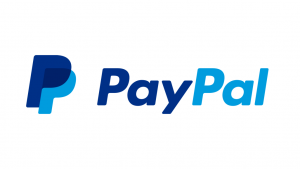Support Us
We practice the Three T’s – Talent, Time, and Treasure at Abiding Presence. We wish everyone could tithe, but realize in these economic conditions many find it difficult to make ends meet. NEVER let what you put into a collection plate keep you from worshiping God.
Are you seeking a way to support us in our ministry? Do you have a talent t share? Do you have time to spare for lay ministry? Are you looking to share your treasure?
You can make an online donation to Abiding Presence Faith Community in any of the following ways. Simply click on the link of the method you wish to utilize or send us a check or money order to the address at the bottom of the screen.
Thank you for your support! Click here to contact us with any questions or to volunteer your Talent or Time. God Bless You.
Our new way for donors to give is through Zelle. Use bkpg@apfcwp.com for the email address.
PayPal.com
Use bkpg@apfcwp.com for the email address.
.
Ways to Donate to a 501 (c)(3) church.
We get asked how one might go about helping the church financially. Here are a few ways a person may donate to a 501(c)(3) like Abiding Presence. December is a perfect time to consider making a donation before the end of the tax year.
1) One-Time Donation
The most common type of donation to nonprofits, one-time donations, occurs when someone gives a specific monetary amount to an organization once. Even if that person gives the same amount to the same organization several times throughout the year, because there isn’t a planned recurring schedule or written expectation of when and how the donation will be made, they are all considered one-time donations
.
2) Recurring Gifts
When someone decides to commit to a consistent recurring schedule of donating, this is considered a recurring gift. One benefit of recurring gifts is that they help give the nonprofit an expectation of consistent, predictable cash flow which enables them to make forecasts into funding and scheduled payments throughout the year. Additionally, it might help the person donating by spreading their contribution out over time rather than in one lump sum. For example, you might not be able to donate $300 all at once, but you may be able to budget an extra $25 a month as a recurring gift.
3) Stock Donations
Another popular type of donation that nonprofits receive comes through stock. Did you know you can donate long-term appreciated securities such as stock, bonds, and mutual funds? And it’s easier than it may seem. When you donate the stock itself—rather than selling or liquidating the security—not only do you remove a step in the process, but you won’t need to remove the long-term capital gains taxes paid from the overall sum. This increases your donation amount up to 37%. To transfer stock, either you or your broker fills out the transfer authorization form, and that’s all there is to it.
4) Planned Gifts
It can be hard to think about what happens after we’re gone but setting up a planned gift is a great way to ensure the charities you support are included in your arrangements. There are a number of ways you can use planned giving to build charitable giving into your life plans, even after death. Some can even help you lower your taxable income now! Consider planning now and explore some of these ways of giving after death:
Bequest: A specific bequest of money or property naming the nonprofit as a beneficiary. Residual bequest of the remainder of the estate after specific bequests. Contingent bequest in which the gift to the nonprofit occurs if the original beneficiaries die before the donor.
Planned Gift:
Charitable Remainder Trust
Charitable Gift Annuity
Charitable Lead Trust
Life Tenancy Agreement
Life Insurance:
The nonprofit can be named as the beneficiary of a new life insurance policy, which is revocable by the donor. The nonprofit can be named as the owner and beneficiary of a new life insurance policy, which is irrevocable. An existing life insurance policy can be changed to include the nonprofit as a beneficiary or to transfer ownership of the policy to the nonprofit.
Qualified Retirement Plan:
The nonprofit can be named as the beneficiary of a tax-deferred retirement plan, including IRA, 401(k), 403(b), Keogh, etc.
5) In-Kind Donations
Donations don’t need to be monetary to make an impact. In-kind donations are gifts of goods, services, time, or expertise for nonprofits. When you provide an in-kind donation, you’re helping to alleviate some of the stress the nonprofit undergoes and allows them to use their financial resources in better ways. For example, when you donate your time and expertise, you’re allowing the nonprofit to put more money toward its mission instead of additional staff or contractors, help existing staff work more efficiently by taking on some of the load, and bring experience to the organization that might otherwise need to be outsourced. Gifts of goods, like laptops for homework centers or art supplies for seniors, keep the nonprofit from spending funds on the things they need.


